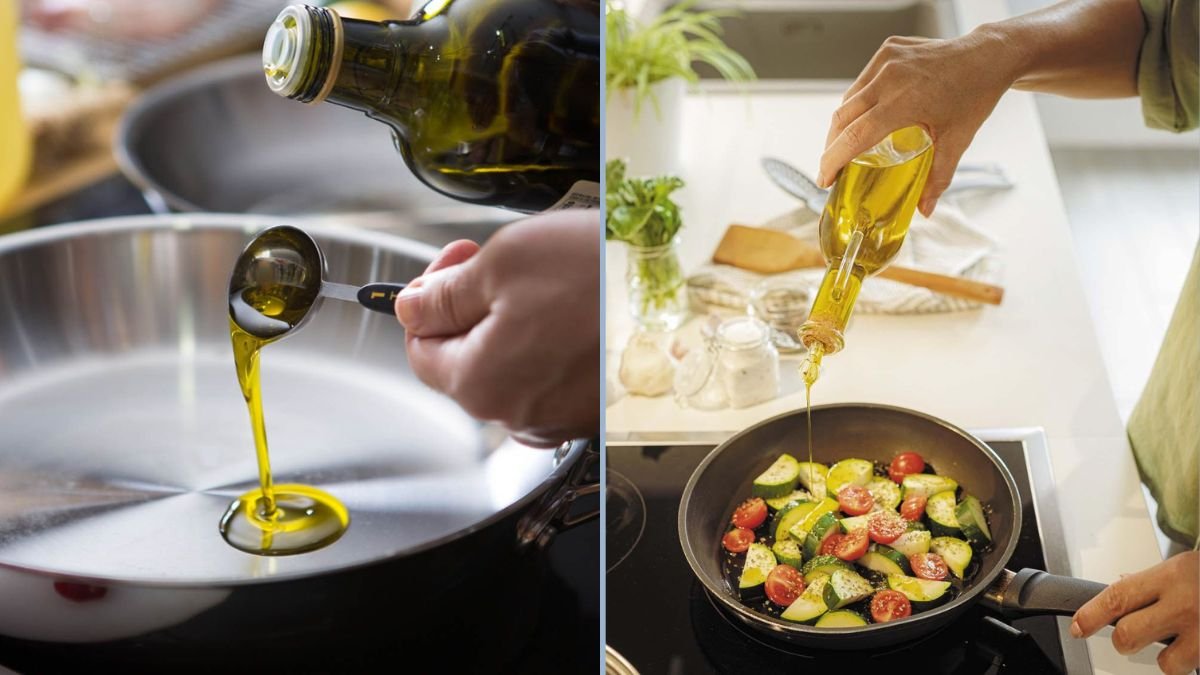Olive oil has been celebrated for centuries, from the Mediterranean diet to modern kitchens worldwide, as one of the healthiest cooking oils available. Not only does it add a rich, fruity flavor to meals, but it is also packed with nutrients and beneficial compounds that support heart health, reduce inflammation, and promote overall wellness. When used correctly, olive oil can elevate the flavor of your food while boosting its nutritional value. In this article, we explore the benefits of cooking with olive oil, the different types available, and practical tips for using it effectively in vegetarian and plant-based cooking.
What Makes Olive Oil Healthy
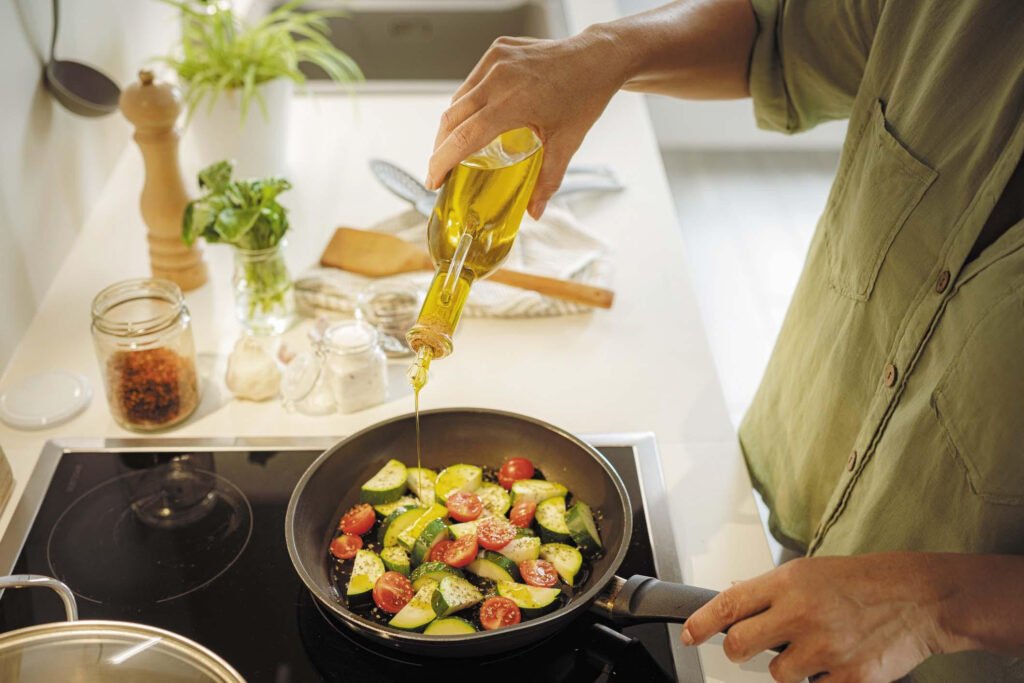
Olive oil is primarily composed of monounsaturated fatty acids (MUFA), particularly oleic acid, which is linked to several health benefits. Additionally, it contains polyphenols—natural compounds with antioxidant and anti-inflammatory properties.
1. Supports Heart Health
Monounsaturated fats in olive oil help reduce LDL (bad cholesterol) and maintain or increase HDL (good cholesterol). Regular consumption of olive oil has been associated with lower risks of heart disease and improved blood vessel function.
2. Rich in Antioxidants
Olive oil contains polyphenols like oleuropein and hydroxytyrosol, which help fight oxidative stress and inflammation. These antioxidants can protect cells from damage and may reduce the risk of chronic diseases.
3. Anti-Inflammatory Benefits
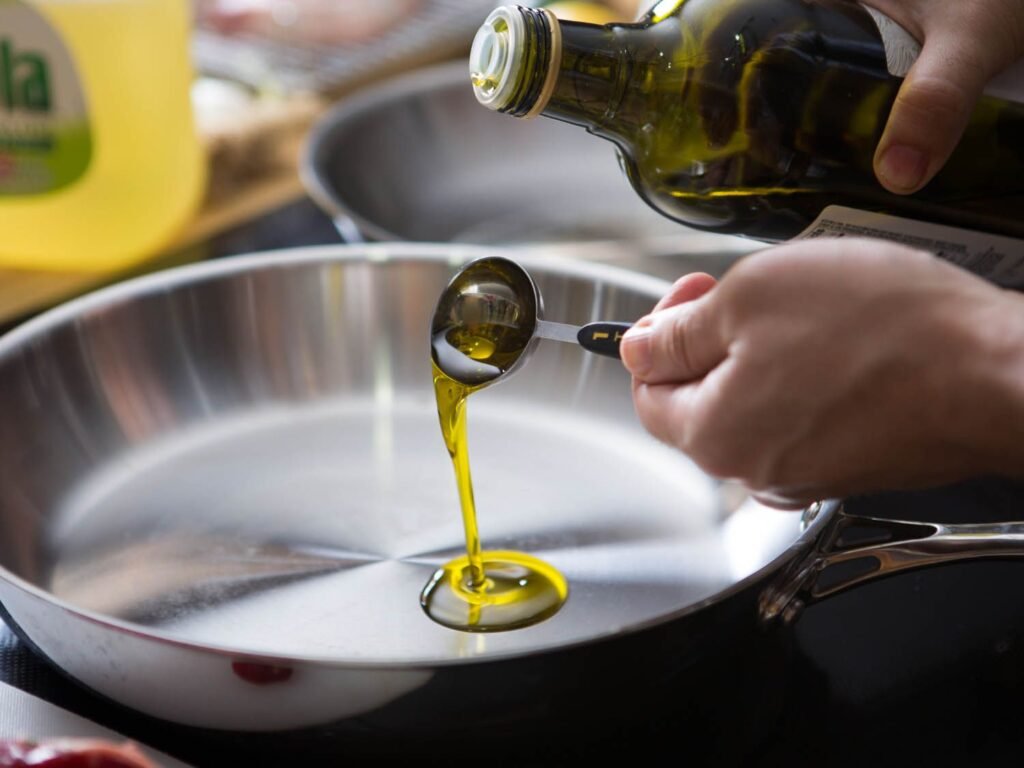
Chronic inflammation is linked to many diseases, including diabetes, heart disease, and arthritis. Compounds in olive oil, such as oleocanthal, have been shown to exhibit anti-inflammatory effects similar to those of ibuprofen, promoting long-term health.
4. Supports Brain Health
The antioxidants and healthy fats in olive oil support cognitive function and may reduce the risk of neurodegenerative conditions. Diets rich in olive oil, like the Mediterranean diet, have been linked to better memory and cognitive health in older adults.
5. Promotes Digestive Health
Olive oil has mild laxative effects and supports a healthy digestive tract. It can improve nutrient absorption from vegetables, grains, and legumes, enhancing the nutritional quality of meals.
6. Aids in Weight Management
Despite being calorie-dense, olive oil can support weight management when used in moderation. Its monounsaturated fats and flavor promote satiety, helping control hunger and reduce overall calorie intake.
Types of Olive Oil

Not all olive oils are created equal. Choosing the right type can affect both flavor and nutritional value:
1. Extra Virgin Olive Oil (EVOO)
- Description: Made from the first cold pressing of olives; highest in antioxidants and flavor.
- Use: Best for dressings, drizzling over vegetables, and low to medium-heat cooking.
2. Virgin Olive Oil
- Description: Slightly lower quality than EVOO but still contains antioxidants.
- Use: Suitable for sautéing, roasting, or light frying.
3. Refined Olive Oil
- Description: Processed to remove impurities; lower in flavor and antioxidants.
- Use: Better for high-heat cooking, though less nutritious than EVOO.
4. Olive Pomace Oil
- Description: Extracted from the leftover pulp; low in flavor and antioxidants.
- Use: Often used for deep frying or industrial cooking, less ideal for home cooking.
Tips for Using Olive Oil in Cooking
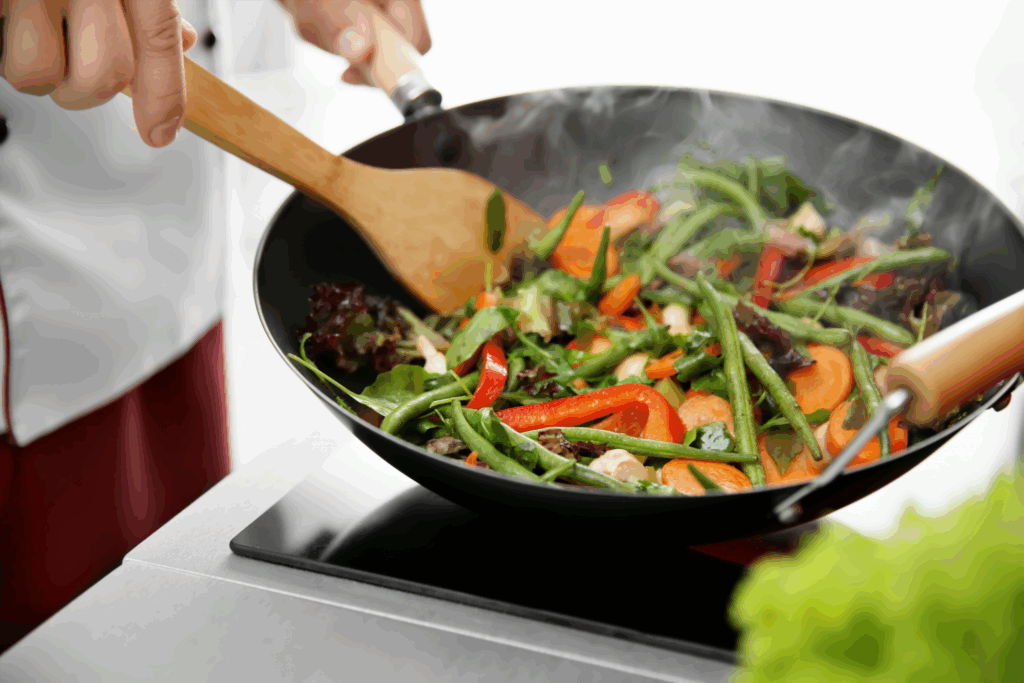
Using olive oil correctly ensures maximum flavor and nutritional benefit:
1. Mind the Smoke Point
- Extra virgin olive oil has a smoke point around 375–420°F (190–215°C).
- Use EVOO for sautéing, roasting at moderate temperatures, or drizzling raw over dishes.
- For higher-heat cooking, consider refined olive oil or use a combination of oils.
2. Store Properly
- Olive oil is sensitive to light, heat, and air.
- Store in a dark, cool place in a tightly sealed container.
- Avoid plastic containers and prolonged exposure to direct sunlight.
3. Use Generously but Wisely
- Olive oil adds flavor and healthy fats, but it is calorie-dense.
- Use 1–2 tablespoons in cooking or as a finishing drizzle for optimal health benefits.
4. Pair with Nutrient-Rich Foods
- Olive oil enhances the absorption of fat-soluble vitamins (A, D, E, K).
- Pair with vegetables, grains, beans, or leafy greens for maximum nutritional benefit.
5. Enhance Flavor
- Drizzle EVOO over cooked vegetables, salads, grain bowls, or soups.
- Mix with fresh herbs, garlic, or spices for a flavorful dressing or dip.
- Use it as a finishing touch on hummus, roasted vegetables, or avocado toast.
Cooking Techniques Using Olive Oil
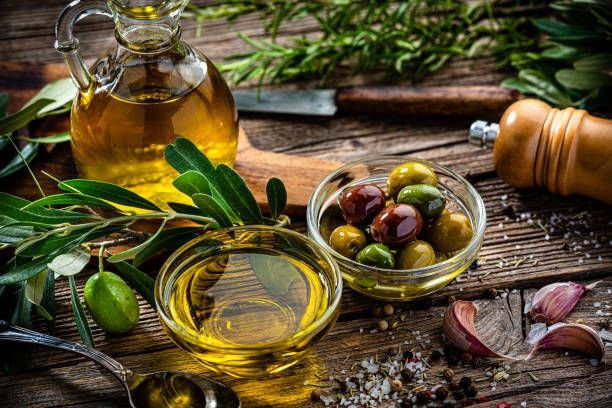
1. Sautéing
- Heat 1–2 tablespoons of olive oil in a pan over medium heat.
- Sauté vegetables, tofu, or legumes to create a flavorful base.
- Add herbs and spices toward the end to preserve delicate flavors.
2. Roasting
- Toss vegetables, potatoes, or chickpeas with olive oil, salt, and spices.
- Roast at 375–400°F (190–205°C) until tender and slightly caramelized.
- EVOO enhances flavor and maintains nutrients at moderate roasting temperatures.
3. Drizzling and Dressing
- Drizzle raw olive oil over salads, cooked vegetables, soups, or grains.
- Combine with lemon juice, balsamic vinegar, or fresh herbs for a healthy, flavorful dressing.
4. Baking
- Substitute butter or other oils in recipes with olive oil for moist, flavorful results.
- Works well in bread, muffins, cakes, and savory bakes.
Olive Oil in Vegetarian and Plant-Based Diets
Olive oil is particularly valuable in vegetarian or vegan diets, where plant-based sources of healthy fats are essential:
- Enhances Absorption: Helps absorb nutrients from leafy greens, tomatoes, peppers, and other vegetables.
- Flavor and Satiety: Adds richness to plant-based meals without the need for animal fats.
- Supports Heart Health: Plant-based diets are naturally higher in fiber and lower in saturated fat; olive oil complements this profile perfectly.
- Culinary Versatility: Works in stir-fries, grain bowls, soups, sauces, dips, and raw dishes.
Creative Ways to Use Olive Oil
1. Herb-Infused Olive Oil
- Gently heat EVOO with rosemary, thyme, or garlic.
- Drizzle over roasted vegetables, soups, or bread for extra flavor.
2. Salad Dressings
- Mix olive oil with balsamic vinegar, lemon juice, mustard, or tahini for versatile dressings.
3. Grain Bowls and Legume Dishes
- Finish cooked quinoa, rice, lentils, or chickpea salads with a drizzle of olive oil and a sprinkle of fresh herbs.
4. Dips and Spreads
- Blend olive oil with roasted red peppers, herbs, or beans to make creamy, flavorful spreads.
5. Baking and Desserts
- Replace butter with olive oil in muffins, cakes, or cookies for a moist texture and subtle fruity flavor.
Tips for Maximizing Health Benefits
- Choose extra virgin olive oil whenever possible for the highest antioxidant content.
- Use fresh, high-quality oil; check the harvest or expiration date.
- Combine olive oil with vegetables, grains, and legumes to enhance nutrient absorption.
- Avoid overheating EVOO to preserve delicate compounds.
Conclusion
Olive oil is more than just a cooking ingredient—it is a powerhouse of nutrition and flavor. Packed with heart-healthy monounsaturated fats, antioxidants, and anti-inflammatory compounds, it supports cardiovascular health, brain function, digestion, and overall well-being. When used correctly, olive oil can elevate plant-based dishes, enhance nutrient absorption, and add rich, satisfying flavor to meals.
From sautéing and roasting to drizzling over salads or blending into dressings, olive oil is a versatile and essential ingredient in vegetarian and vegan cooking. Choosing high-quality, extra virgin olive oil, storing it properly, and using it thoughtfully in a variety of recipes allows you to reap its maximum health benefits while enjoying its delicious flavor.
Incorporate olive oil into your daily cooking, and you’ll discover how this ancient liquid gold can nourish your body, enrich your meals, and transform your plant-based dishes into something truly special.
